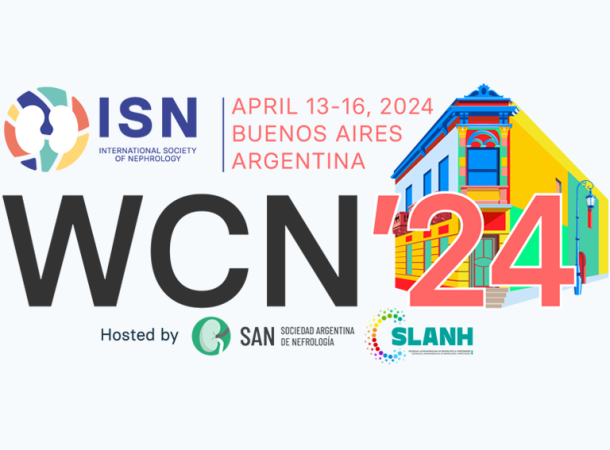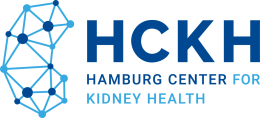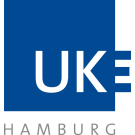-
 Laboratory for personalized treatment of immune-mediated kidney diseases
Laboratory for personalized treatment of immune-mediated kidney diseasesElion Hoxha
Mission Statement
“Personalizing treatment of immune-mediated glomerular diseases”
— Elion Hoxha, MD
Team Members

Julia Arndt

Celine Brauer

Nicoletta Ferru

Sandra Freyberg

Birgit Goldmann

Benedikt Krümpelmann

Eva-Maria Kuhr

Maja Machalitza

Linda Reinhard, PhD

Katharina Schulz

Max Webendörfer

Lothar Weiss
Research
Membranous Nephropathy (MN) is one of the most common causes for a nephrotic syndrome in adults and leads in up to 40% of cases to end-stage renal disease. MN is an autoimmune disease, caused by binding of circulating antibodies to endogenous or planted exogenous antigens. In up to 20% of cases MN is associated with other diseases, most notably malignancies, infections and autoimmune diseases.
In 75-80% of cases the podocytic target antigen in MN is Phospholipase A2 Receptor 1 (PLA2R1). Thrombospondin Type 1 Domain Containing 7A (THSD7A) is a second target antigen, causing MN in 2-3% of patients. Autoantibody levels in patients with MN are closely associated with treatment response and prognosis. Moreover, THSD7A-associated MN is often associated with malignancies.
The main focus of our group is the study of pathomechanisms of membranous nephropathy (MN) using translational approaches. Some of our major contributions in the field of MN have been the characterization of the clinical role of domain-specific PLA2R1-antibodies and of THSD7A-antibodies for the diagnosis, management and prognosis estimation of MN; the characterization of the pathogenicity of the PLA2R1-antibody in MN; the identification of Netrin G1 as a new target antigen in MN; the identification of the potential molecular link between THSD7A-associated MN and malignancy. Our group has also established the Hamburg Glomerulonephritis Registry, one of the largest prospectively studied cohort of patients with glomerulonephritis worldwide. Our aim is to clarify the specific pathomechanisms leading to development and progression of human MN and translate the understanding of MN pathophysiology to novel, specific treatment options for patients with this disease.
Some of our major aims are the identification of new target antigens, leading to development of MN in patients who are negative for PLA2R1 and THSD7A antibodies; the investigation of the mechanisms leading to development of autoimmunity and production of PLA2R1 and THSD7A antibodies in patients with MN; the characterization of pathomechanisms involved in disease progression, including characterization of pathogenic epitopes on the target antigens, antibody subclasses and complement activation. Our main objective is the development of new treatment strategies for patients with MN, which are individualized, specific, non-immunosuppressive and therefore less toxic.
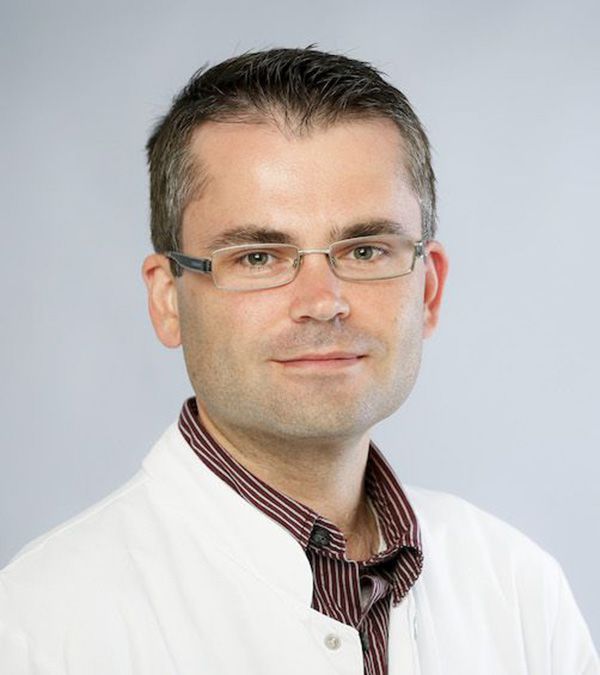
Elion Hoxha, MD
Research Group Leader
III. Department of Medicine, University Medical Center Hamburg-Eppendorf (UKE)
Martinistr. 52
20246 Hamburg, Germany
CV
| since 2020 |
Research Group Leader, Hamburg Glomerulonephritis Registry, Project C1, Collaborative Research Centre 1192, University Medical Center Hamburg-Eppendorf, Germany |
|
since 2019
|
Consultant (Oberarzt). III. Department of Medicine, University Medical Center Hamburg-Eppendorf, Germany |
|
since 2016
|
Research Group Leader, Membranous Nephropathy – Clinical role of pathogenetic
mechanisms, Project B1, Collaborative Research Centre 1192, University Medical Center Hamburg-Eppendorf, Germany
|
|
2006 - 2008
|
Graduate Study of Molecular Biology, University of Hamburg, Germany |
| 2002 - 2008 | Study of Medicine, University of Hamburg, Germany |
|
2016 - 2020
|
Habilitation in „Internal Medicine and Nephrology“. III. Department of Medicine, University Medical Center Hamburg-Eppendorf, GermanyE |
|
2016
|
Board Certification (Facharzt) in Nephrology and Internal Medicine |
|
2009
|
Dr. med. Thesis. Institute for Biochemistry and Molecular Biology I, University Medical Center Hamburg-Eppendorf, Germany (Supervisor: Prof. Dr. Manfred Jücker)
|
Clinical postgraduate education:
|
2016 - 2018
|
Medical Specialist for Internal Medicine and Nephrology
III. Department of Medicine, University Medical Center Hamburg-Eppendorf, Germany
|
|
2009 - 2016
|
Residency and fellowship for Internal Medicine and Nephrology
III. Department of Medicine, University Medical Center Hamburg-Eppendorf, Germany
|
Scientific postgraduate education:
|
since 2019
|
Heisenberg Fellowship – Deutsche Forschungsgemeinschaft, Germany |
|
2020 - 2021
|
Steering Committee Member and Head of the COVID-19-Dialysis-Registry of the German Society of Nephrology
|
|
2017 - 2018
|
Else Kröner Exzellenzstipendium (Research Fellowship) – Else Kröner-Fresenius Stiftung, Germany |
| 2012 - 2015 |
Research Grant “Characterization of inflammatory cells and mediators in human glomerulonephritis” – Deutsche Forschungsgemeinschaft, Germany
|
| 2011 - 2013 |
Research Grant “Role of PLA2R1-ab for the development of primary membranous nephropathy” – Werner Otto Stiftung, Germany
|
| 2009 - 2011 |
Fellowship at the Clinical Research Unit 228 – Immunopathogenesis and Therapy of Glomerulonephritis – Deutsche Forschungsgemeinschaft, Germany |
| 2022 | Franz-Volhard Award of the German Renal Society |
|
2018 - 2020
|
Teacher of the Year Award – University Medical Center Hamburg-Eppendorf |
|
2016
|
Nils-Alwall-Award for clinical research – German Society of Nephrology, Germany |
|
2012
|
Award for Best Oral Presentation – German Society of Nephrology, Germany |
|
2010
|
Heinrich Nether-Promotionspreis (Award for best MD thesis in the field of Molecular Biology) |
|
2010
|
Best Abstracts Presented by Young Authors Award – European Renal Association, European Dialysis and Transplant Association |
|
2004 - 2005
|
Scholarship – University of Hamburg |
Selected publications
1. | Membranous nephropathy: new pathogenic mechanisms and their clinical implications. |
2. | A New Chemiluminescence Immunoassay for Phospholipase A2 Receptor 1 Autoantibodies Allows Early Identification of Autoantibody Recurrence in Patients With Membranous Nephropathy. |
3. | Is primary membranous nephropathy a complement mediated disease? |
4. | Clinical Relevance of Domain-Specific Phospholipase A2 Receptor 1 Antibody Levels in Patients with Membranous Nephropathy. |
5. | Diagnostic role of renal biopsy in PLA2R1-antibody-positive patients with nephrotic syndrome. |
6. | The Most N-Terminal Region of THSD7A Is the Predominant Target for Autoimmunity in THSD7A-Associated Membranous Nephropathy. |
7. | Translational Aspects of Primary Membranous Nephropathy. |
8. | An Indirect Immunofluorescence Method Facilitates Detection of Thrombospondin Type 1 Domain-Containing 7A-Specific Antibodies in Membranous Nephropathy. |
9. | Autoantibodies against thrombospondin type 1 domain-containing 7A induce membranous nephropathy. |
10. | A Mechanism for Cancer-Associated Membranous Nephropathy. |
News
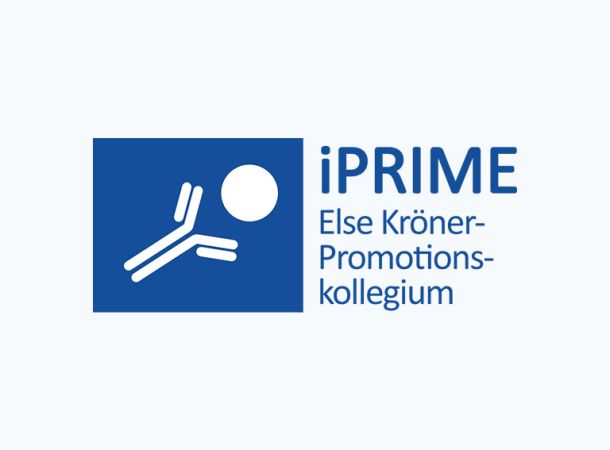
Immune Response to Malaria and Chagas disease
PD Dr. Thomas Jacobs, Bernhard Nocht Institute for Tropical Medicine, „Immune Response to Infection“ ...
Martinistraße 52
Campus Research N27
20246 Hamburg Germany



